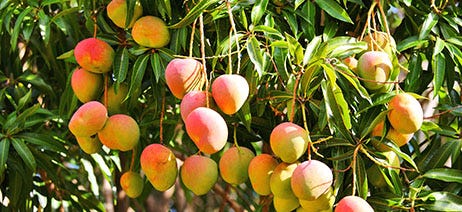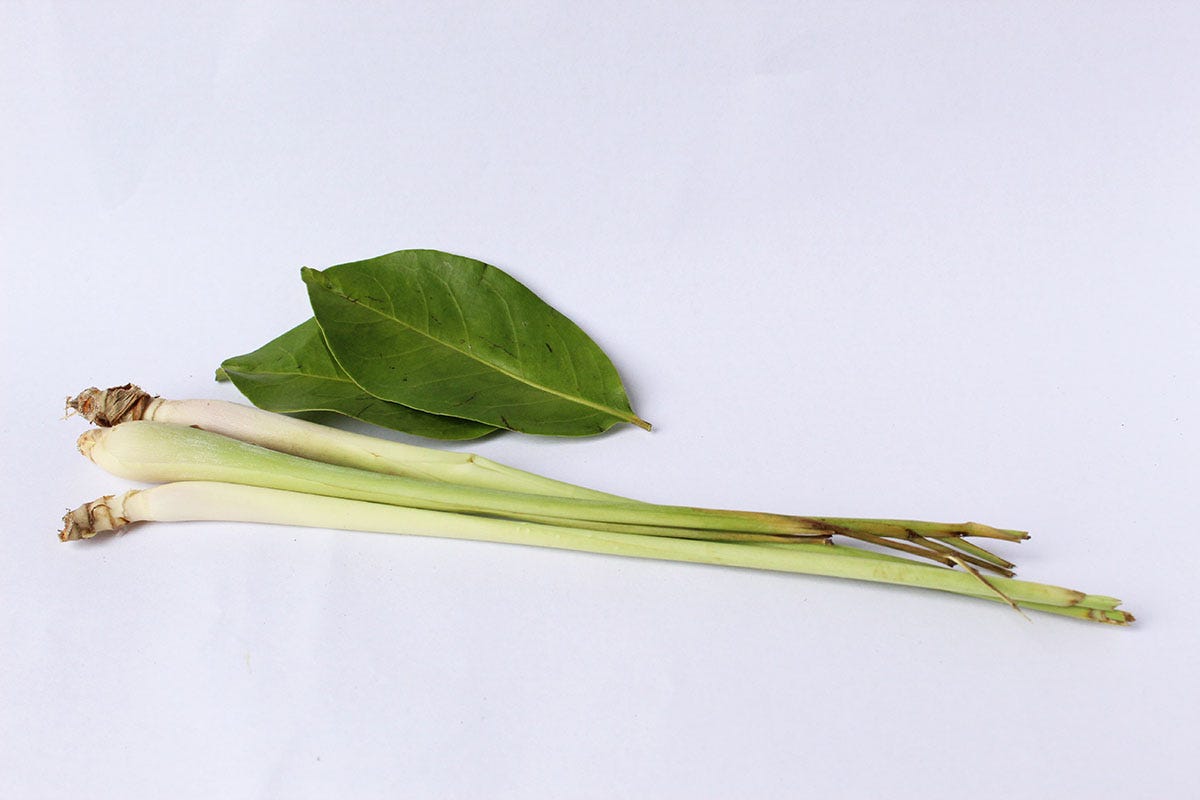
Myrcene: The Dominant Terpene
Terpenes are the unsung heroes of the cannabis plant’s composition, contributing to its distinct flavors, aromas, and effects. Myrcene stands out as one of the most abundant and influential. Known for its earthy and musky aroma, myrcene doesn’t just smell great—it also has a long history of use in traditional medicine, and it plays a significant role in cannabis’s effects. In this terpene guide, you'll learn:
- What is Myrcene?
- What Does Myrcene Smell and Taste Like?
- What Are the Potential Benefits of Myrcene?
- What Cannabis Strains Are High in Myrcene?
- FAQs About Myrcene
What is Myrcene?
Myrcene, also called beta-myrcene or β-myrcene, is a prominent terpene found in cannabis. It’s not just limited to cannabis, though. Myrcene is also found in mangoes, lemongrass, and bay leaves and is the primary terpene in hops, making it well-known to beer enthusiasts.1 In cannabis, myrcene is typically the dominant terpene in most flower strains, contributing to their earthy, musky aroma and subtle herbal flavor.2


What Does Myrcene Smell & Taste Like?
Myrcene has a distinct aroma that’s earthy, musky, and herbal. Taste-wise, it's spicy, loamy, and musky, with sweet fruity notes. Think of biting into a ripe mango or a clove. While it’s a cornerstone in cannabis and beer production (especially for its green hops smell), it’s not commonly marketed for its scent alone. Instead, its role as a terpene shines in the unique flavors and effects it brings to cannabis and hops.3
What Are the Potential Benefits of Myrcene?
Myrcene has been used in folk medicine for centuries, particularly in remedies like lemongrass tea, which has potential calming and pain-relieving properties. Modern research supports some of these traditional uses, highlighting the terp’s potential in pain relief, inflammation reduction, and even sedation.3


Pain Relief
Myrcene potentially contributes to the pain-relieving effects of lemongrass tea, a staple in folk medicine for centuries. This terpene is believed to interact with the body’s natural pain pathways, reducing discomfort and tension. Studies suggest that myrcene may help alleviate various types of pain, from minor aches to more chronic conditions, possibly making it an alternative for those seeking natural relief without the side effects of synthetic painkillers. Its promising role in pain management continues to draw interest from researchers.4
Anti-Inflammatory
Myrcene is also known for its anti-inflammatory properties, which have been valued in traditional medicine for ages. Research indicates that this terpene can help reduce inflammation associated with autoimmune conditions, like rheumatoid arthritis. By targeting inflammatory markers in the body, myrcene may offer significant relief for those dealing with chronic joint pain and swelling, improving overall comfort and quality of life. Its potential as a natural anti-inflammatory agent continues to be a focus of scientific exploration.5
Relaxation
One of myrcene’s most well-known effects is its sedative properties. If you’ve ever felt deeply relaxed or even drowsy after consuming cannabis, myrcene might be the reason. This terpene is thought to contribute significantly to the calming effects that help ease stress and promote restful sleep.3
What Cannabis Strains Are High in Myrcene?
As one of the most abundant terpenes in cannabis, myrcene is found in a wide variety of strains. Here are the most popular myrcene-rich strains:


White Widow
Sativa-Dominant Hybrid
White Widow is a legendary sativa-dominant hybrid with a 60:40 sativa-to-indica ratio. Its origins trace back to the Netherlands in the 1990s, where it was bred as a cross between Brazilian Sativa and South Indian Indica. The White Widow strain has a unique flavor profile, combining earthy and spicy notes with hints of sweet pine. It smells intensely earthy and spicy. With THC levels averaging around 18-25%, it’s a highly potent choice that appeals to both seasoned cannabis enthusiasts and those exploring myrcene-rich strains.6
OG Kush
Sativa-Dominant Hybrid
OG Kush, also called OGK, is a classic sativa-dominant hybrid with a 55:45 sativa-to-indica ratio. Its origins are debated, but many believe it’s a cross between Chemdawg and a Hindu Kush landrace. Known for its high-myrcene content, OG Kush boasts a bold flavor profile featuring earthy, herbal notes with a hint of sour citrus and skunky spice. The aroma is equally distinctive, blending woody and pine scents with a touch of earthy, lemony fuel. With THC levels averaging around 20-26%, OG Kush has become a favorite.7
Blue Dream
Sativa-Dominant Hybrid
Blue Dream is a beloved sativa-dominant hybrid with a 60:40 sativa-to-indica ratio. Its parentage combines the sweet Blueberry cannabis strain with the potent Haze, resulting in a myrcene-rich strain. Blue Dream’s aroma features sweet berry, vanilla, and earthy tones, while its flavor delivers a mix of herbal and fruity notes with subtle hints of pine—reminiscent of blueberry tea. With THC levels averaging around 17-24%, it’s widely popular among cannabis enthusiasts who appreciate its balanced lineage and standout flavor profile.8


FAQs About Myrcene
Myrcene might be well-known, but there are still a lot of questions about what it is and what it does. Let’s break down some of the most common ones. And if you want to know even more, chat with your favorite Verilife budtender for personalized advice.
Is myrcene indica or sativa?
Neither, or both, depending on how you look at it. Myrcene isn’t indica or sativa-dominant. It’s a terpene found in the trichomes of the cannabis plant, no matter the strain type.
Does myrcene have intoxicating effects?
Myrcene doesn’t produce intoxicating effects on its own. Instead, it participates in the entourage effect, boosting the therapeutic benefits, flavors, and aromas when accompanied by other cannabinoids.
Does myrcene help you sleep?
Yes, myrcene may help you sleep. Animal-based studies have demonstrated its sedative properties and ability to act as a muscle relaxer, but more research is needed on humans. Anecdotal evidence and use throughout history suggests that myrcene could contribute to the relaxing, sedating effects of many cannabis strains.1


Purchasing Myrcene-Rich Strains
Ready to experience the potential benefits of the myrcene terpene? Strains like White Widow, OG Kush, and Blue Dream are packed with this earthy, herbal powerhouse. These strains offer a flavor profile that highlights what makes beta-myrcene so special. Stop by your local Verilife dispensary and chat with a budtender to find the perfect strain for your needs—or discover a new favorite packed with this dominant terpene!
Sources:
1. “What Is Myrcene, and What Does It Do?” Leafwell, October 7, 2024, https://leafwell.com/blog/myrcene
2. “What is myrcene and what does this cannabis terpene do?” Leafly, January 17, 2024, https://www.leafly.com/news/science-tech/myrcene-terpene
3. “Myrcene—What Are the Potential Health Benefits of This Flavouring and Aroma Agent?” Frontiers of Nutrition, July 19, 2021, https://pmc.ncbi.nlm.nih.gov/articles/PMC8326332/
4. “Myrcene mimics the peripheral analgesic activity of lemongrass tea,” National Library of Medicine, August 1991, https://pubmed.ncbi.nlm.nih.gov/1753786/
5. “Anti-Inflammatory and Analgesic Properties of the Cannabis Terpene Myrcene in Rat Adjuvant Monoarthritis,” National Library of Medicine, July 2022, https://pmc.ncbi.nlm.nih.gov/articles/PMC9319952/
6. “White Widow Marijuana Strain,” Allbud, https://www.allbud.com/marijuana-strains/sativa-dominant-hybrid/white-widow
7. “OG Kush Marijuana Strain,” Allbud, https://www.allbud.com/marijuana-strains/sativa-dominant-hybrid/og-kush
8. “Blue Dream Marijuana Strain,” Allbud, https://www.allbud.com/marijuana-strains/sativa-dominant-hybrid/blue-dream


